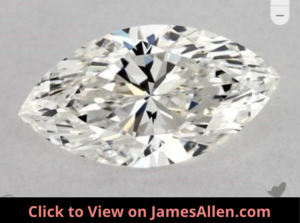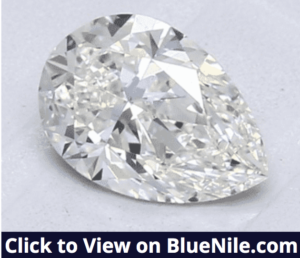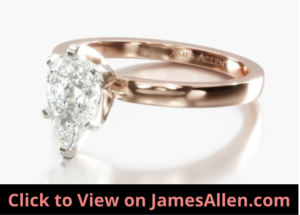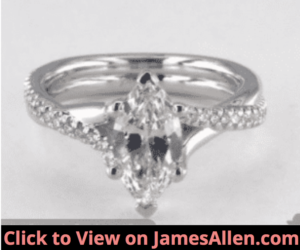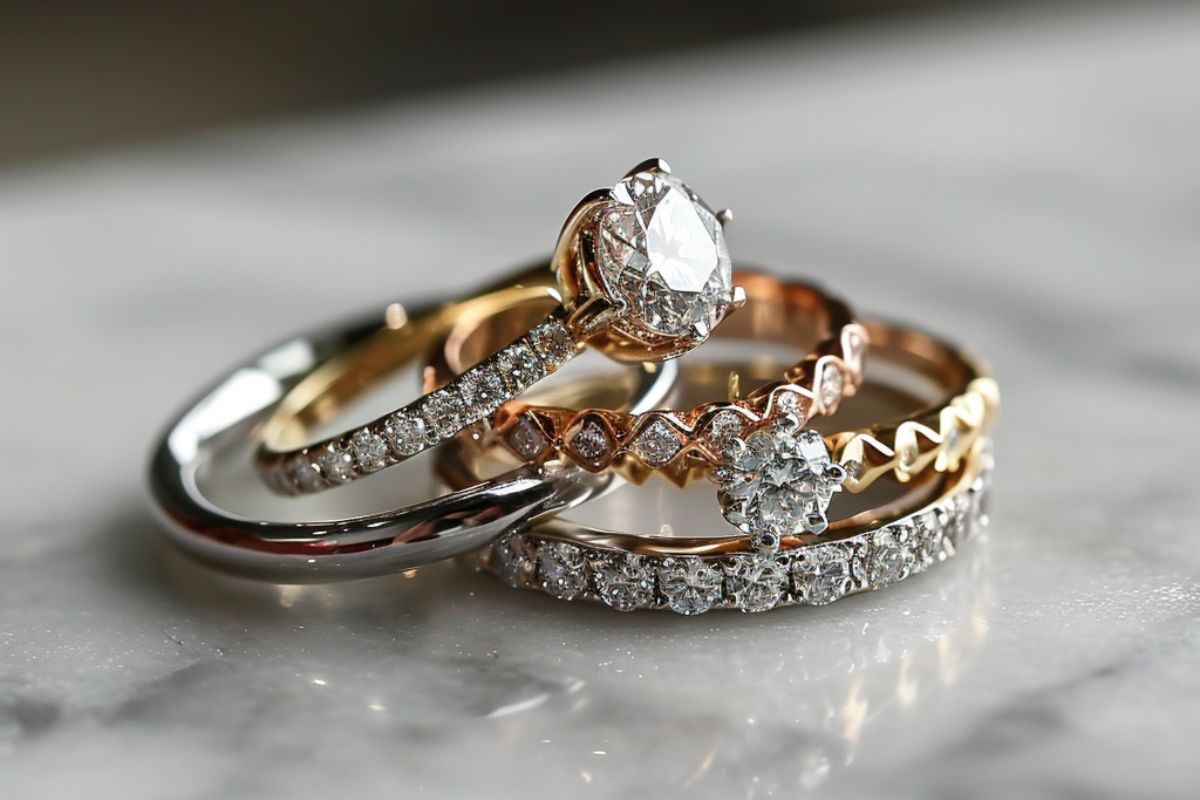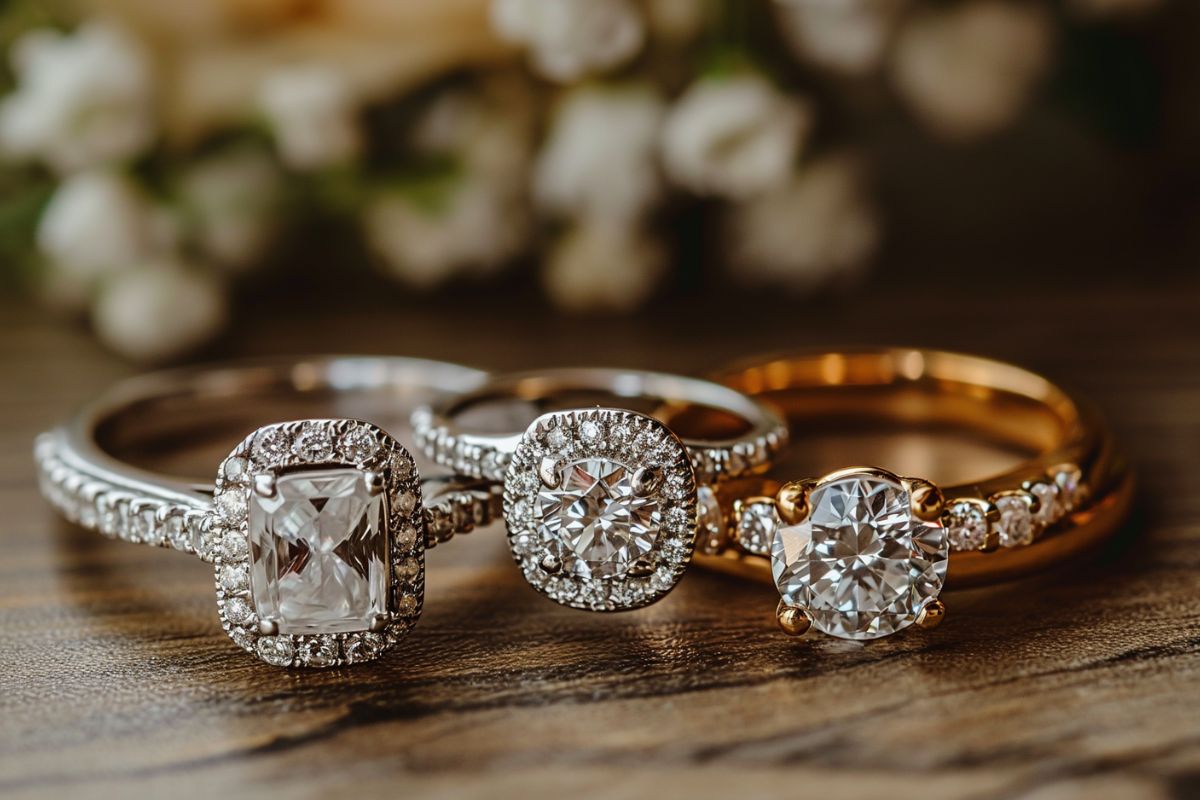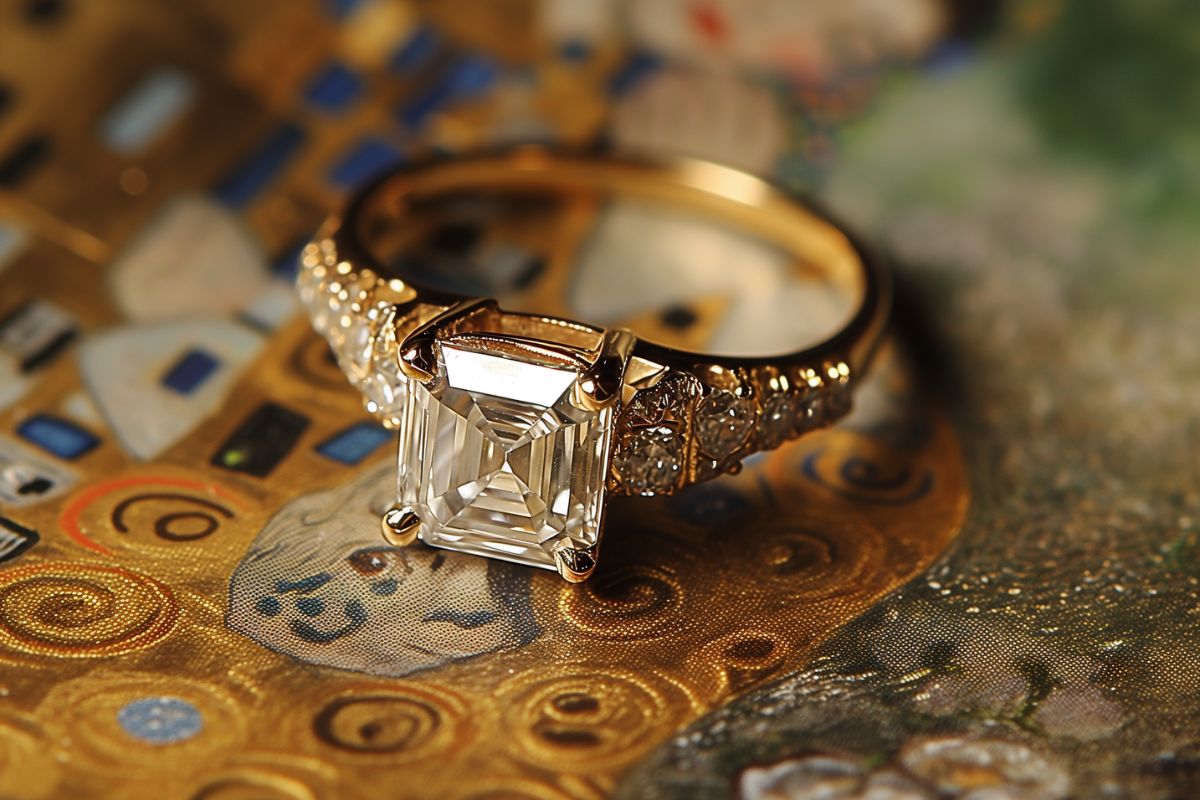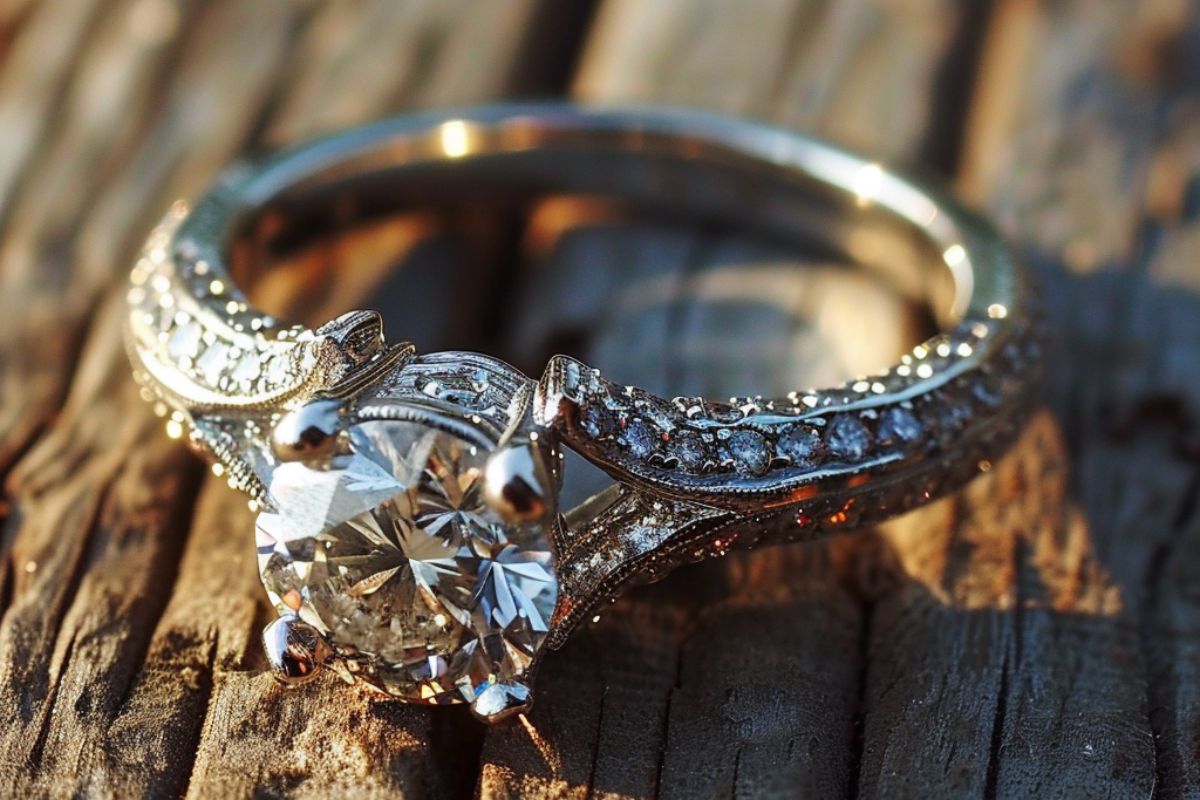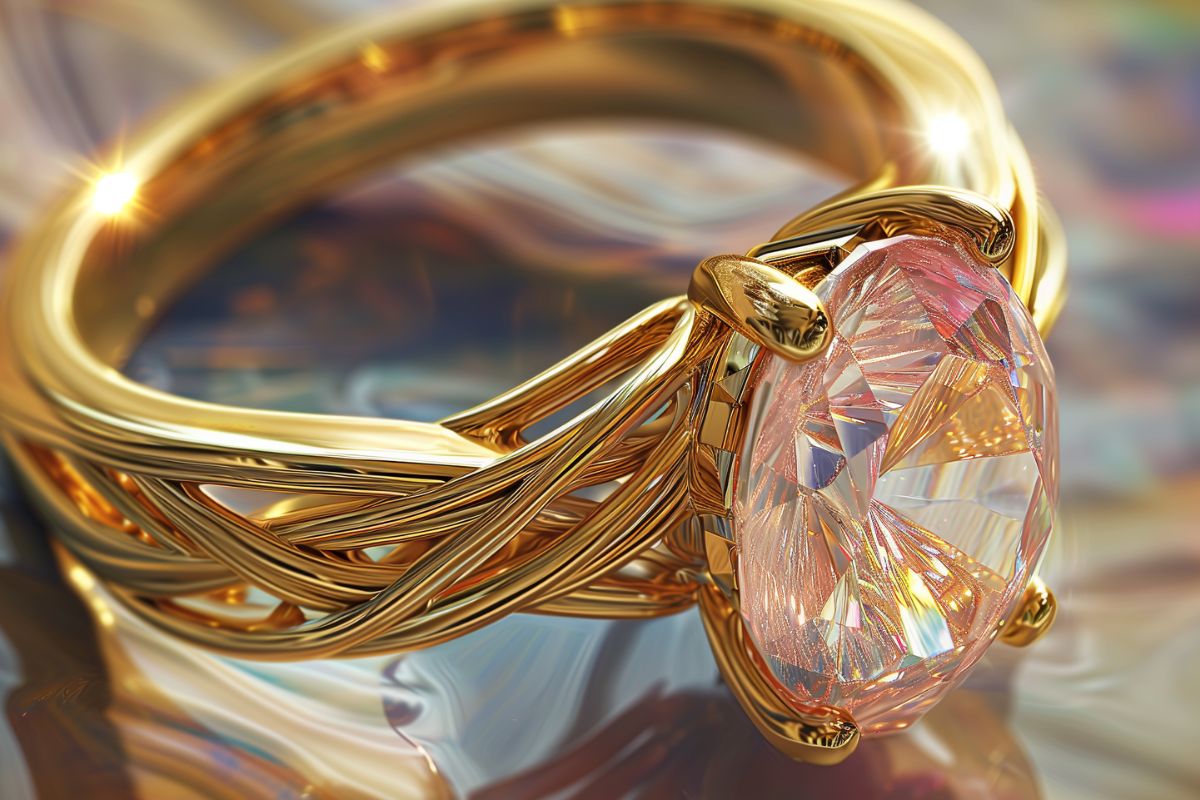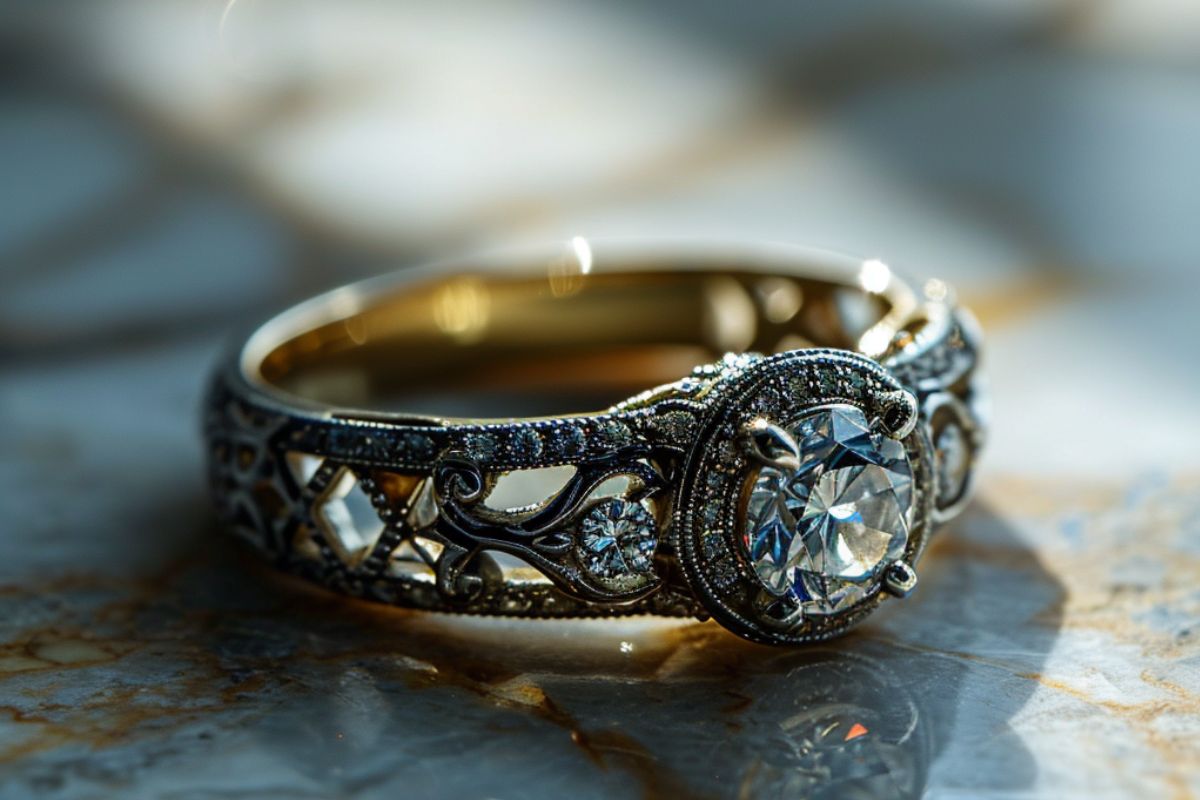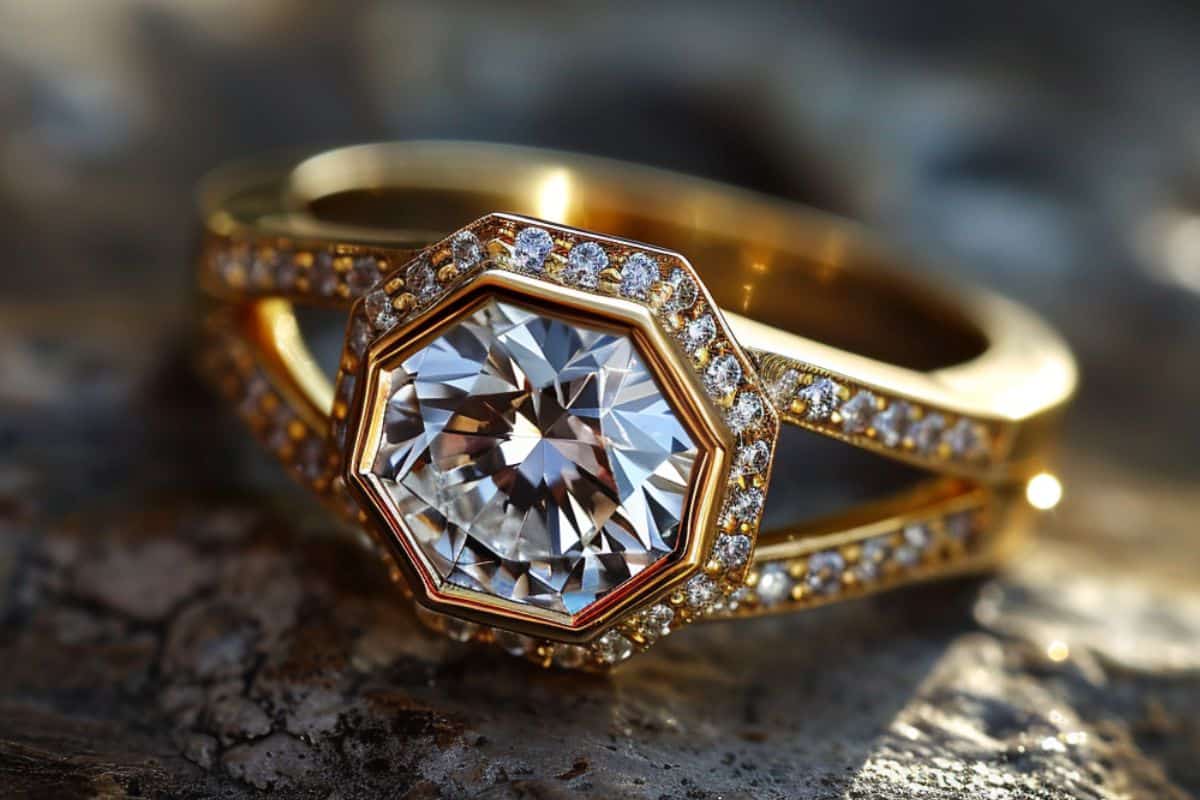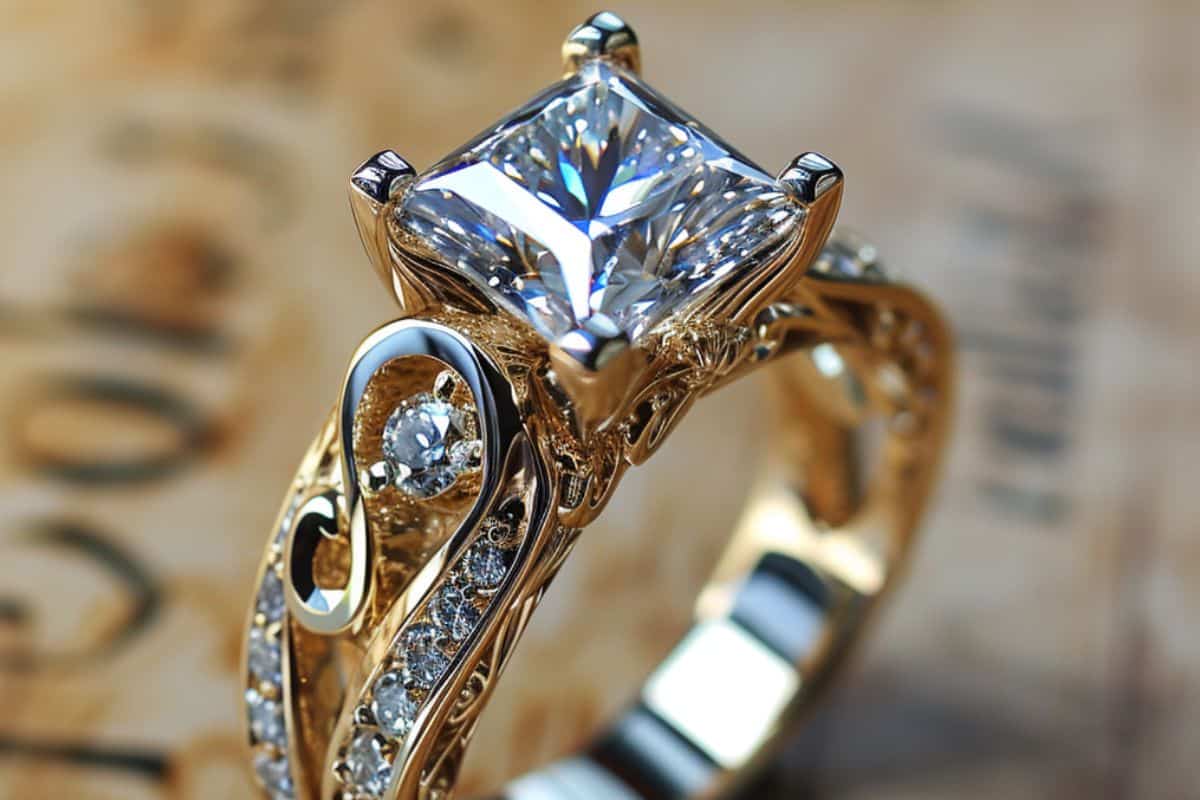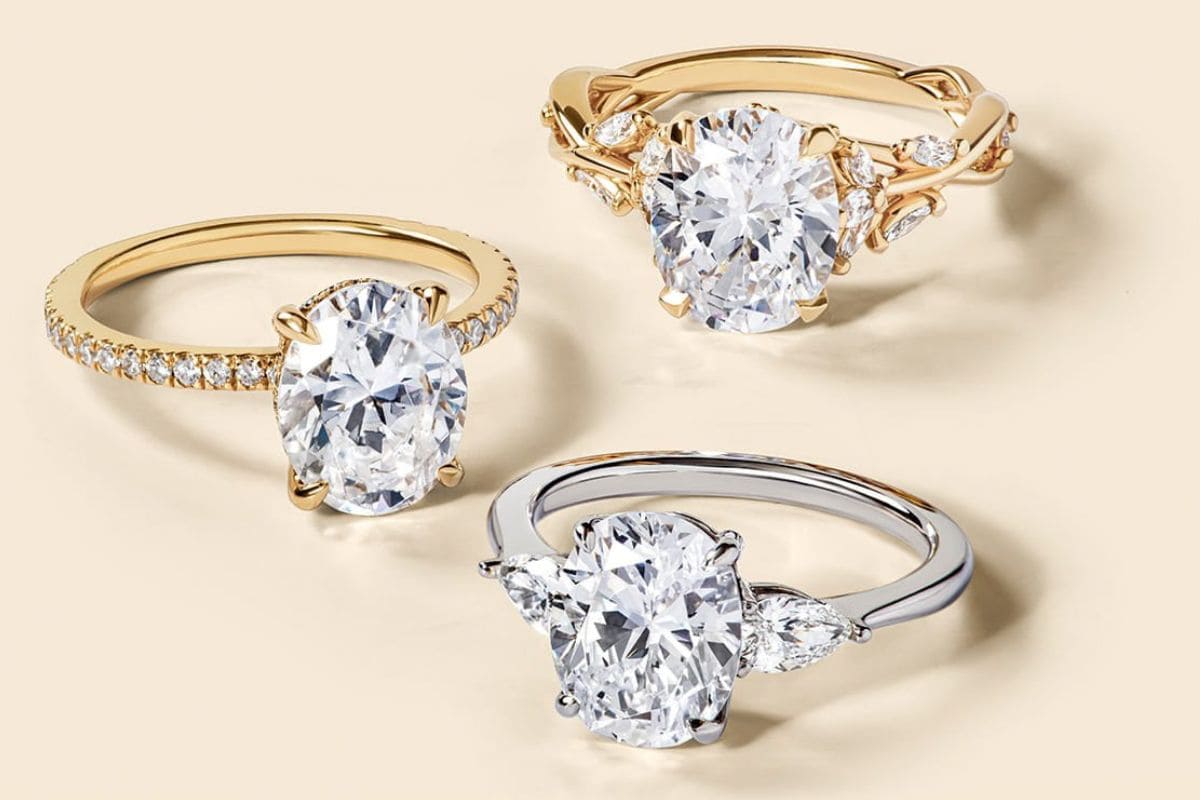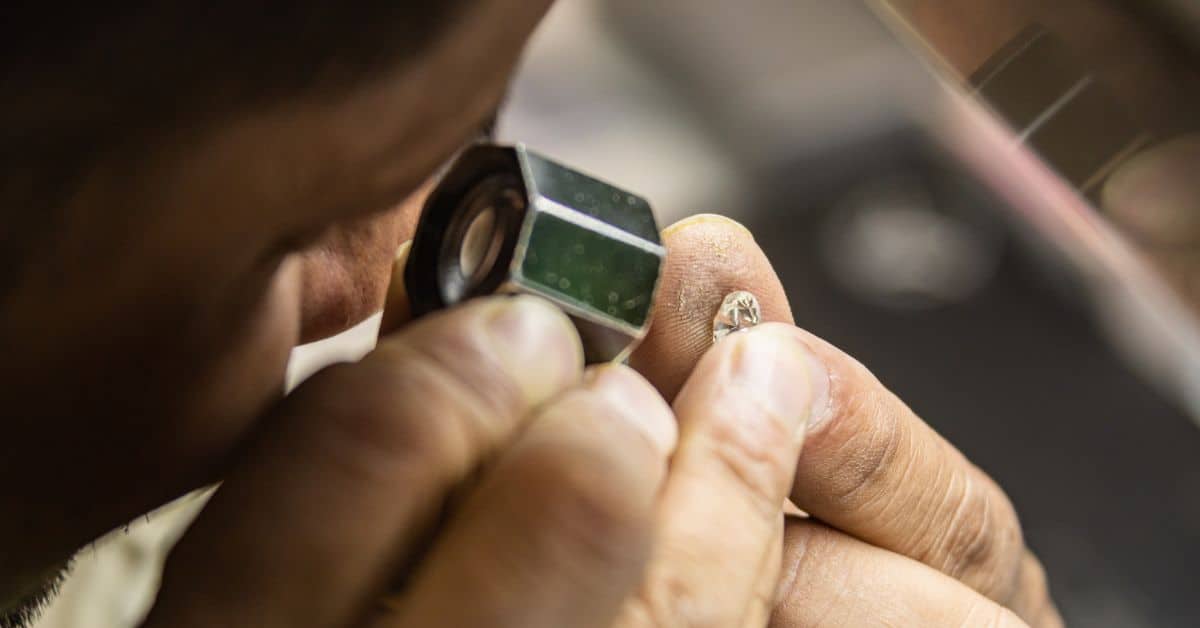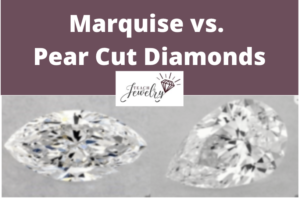
The main difference between marquise and pear cut diamonds is marquise cuts are pointed on both ends, while pear cuts have a rounded and pointed end. Both display high amounts of brilliance because their facets are designed to collect and reflect light.
I’ll detail marquise versus pear cuts, including an overview of each, four ways they’re different, and how to decide which is right for you.
Marquise Cut
Marquise cut diamonds have an elongated shape with a point on each side. It’s wide in the middle and narrows as it approaches both ends.
Take note of those qualities in the image below, and rotate it 360 degrees on the vendor’s website to view it at every angle.
They’re also referred to as eye- or boat-shaped diamonds because of their shape.
The ideal length to width ratio for marquise cut is between 1.75 and 2.15.
Any ratio outside of this range may result in the diamond appearing stretched or condensed.
Marquise cuts often have 58 facets. Thirty-three are on the crown and 25 are on the pavilion.
It’s a modified brilliant cut, so the shape of its facets are comparable to a round cut. Each is triangle- or kite-shaped and captures and reflects light better than step-cut diamonds.
You’ll often see marquise cuts as the main diamond on an engagement ring. But they’re also used as accents placed around the main gem or on its shank, like in the example below.
In this stunning three-stone marquise engagement ring, two diamonds surround the center one, but they’re positioned at a different angle.
This allows you to add scintillation to the piece without increasing the size of the center diamond.
Pear Cut
Pear cut diamonds, also called tear-drops, are brilliant cuts that have one rounded end. The other comes to a point.
It’s a combination of marquise and round cuts.
Check out the example below in high-resolution.
Zoom in on its facets and rotate the gem to learn how it appears at multiple angles.
Notice that in contrast to a round cut, it has an elongated shape.
The 58 brilliant cut facets excel at reflecting white and colored light back to the viewer, which means it works as the center diamond on an engagement ring.
Most pear shaped diamonds have length to width ratios of 1.5 to 2.0. On the lower end, the diamond is condensed and appears more rounded, while on the other end, it stretches thin.
The ideal ratio is between 1.6 and 1.7. It strikes the balance of accentuating its elongated look without stretching it too far.
Pear cuts are immediately identifiable as such.
A friend of mine proposed with a pear cut and rose gold band, like the one below.
Before his fiancé even showed me the ring up close, I’d already noticed it was a pear cut. You already know this based on the image above, but the rose gold pairing creates an exceptional piece.
What are the Differences Between Marquise and Pear Cuts?
1. Price
Pear cuts are often less expensive than marquise cuts when all other qualities are equal.
There is higher demand for marquise versus pear cut diamonds, which explains some of the price difference.
I compiled prices from online diamond retailer James Allen, where I bought my wife’s engagement ring, to provide examples of what you should expect to pay for each cut with the following qualities:
- Carat weight: 1.00
- Color: F
- Clarity: SI1
For a marquise cut with those qualities, the average price is $4,366, with a range of $4,030 to $5,140.
For a pear cut with identical grades from the GIA, the average price is $4,608, and the range is $4,140 to $5,340.
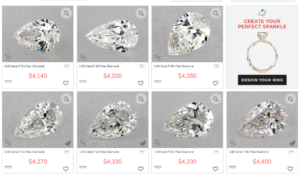
That’s only a one percent difference in average price, and there were many pear cuts more expensive than marquise cuts.
These examples show you can often find pear cuts at a lower price than marquise cuts, but in other cases, prices are similar.
Both cuts sell for less than round cut diamonds with the same qualities, so you can put those savings toward improved carat weight, color, or clarity as well.
2. Brilliance and Fire
Brilliance describes the white light that reflects off the facets of a diamond.
One advantage of marquise cuts and pear cuts is they exhibit strong brilliance when exposed to light. Their facets are specifically designed to minimize the loss of light and instead return it to the viewer.
They offer an alternative shape to traditional round cut diamonds while not sacrificing too much brilliance.
This is in contrast to step-cut diamonds such as emerald, baguette, and Asscher cuts.
Fire is colored flashes of light that result from it being dispersed at different speeds.
Marquise and pear cuts also show high amounts of fire because of their brilliant cut facets. In the image below, I’ve placed the cuts side by side.
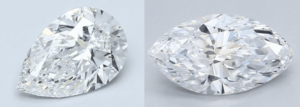
Notice how they’re facets are a similar shape and size.
Now compare them to this round cut.
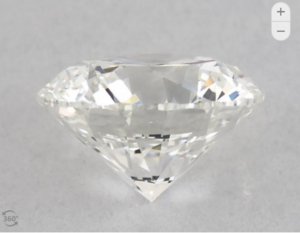
Again, they mimic each other.
When each cut is twirled under light, you’ll notice red, green, blue, and yellow flashes.
Together, fire and brilliance create scintillation. It creates the illusion the facets are turning on and off with motion.
4. Clarity
The Gemological Institute of America (GIA) grades clarity on a scale of flawless to I3, where each step down from flawless indicates more impactful imperfections.
There are some diamond inclusions to avoid, but others have minimal impact on its appearance, durability, and brilliance.
In general, I recommend starting your search for a pear or marquise cut at SI1 clarity, but you may have to move up the scale to VS2 or VS1 to find one that’s eye-clean.
For my wife’s ring, I landed at VS1 clarity.
Brilliant cuts such as pear and marquise diamonds hide inclusions better than step cuts, but they’re susceptible to a particular flaw.
The bow-tie effect in diamonds refers to black squares and triangles that span across its facets.
Although it’s a visible blemish, it’s a result of a poor cut. It’s best to avoid diamonds with bow-tie effect if it’s visible to the naked eye.
To illustrate, here’s both cuts exhibiting the bow-tie effect.
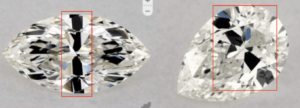
While the flaw likely wouldn’t appear that obvious when viewed in a normal setting, aim for one without it.
5. Types of Settings
Marquise and pear cut diamonds pair well with many types of settings, but there are some aspects to consider because of their unique shapes.
The pointed ends on marquise cuts, and the single sharp point on a pear cut, are more susceptible to chipping than rounded edges.
They require extra protection from the setting that guard them from hits, bumps, and drops.
It’s important to have a prong or bezel grasping its points.
For example, this marquise cut diamond is held by a pave shank with prongs.
The V-prongs on both ends wrap around the points to hold it in place.
Bezel-set marquise diamond rings have even more protection.
The bezel setting encircles the entire diamond, so it’s protected on all sides.
The marquise cut below is wrapped by a 14K yellow gold setting.
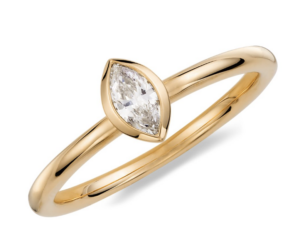
The same principles apply to settings for pear cut diamonds.
The most popular ways to hold pear cuts are with a five- or six-prong setting, but bezel settings improve durability.
How to Decide Between Pear and Marquise Cuts
Marquise and pear cut diamonds can both be the right style for your diamond ring.
If you’re deciding between them, here are some guidelines.
Consider a marquise cut if:
- You prefer the elegance of two sharp points on both sides
- You’re willing to choose a setting that protects both ends
- You don’t mind paying a higher price per carat compared to a pear cut but still want to save compared to a round cut
Opt for a pear cut if:
- You’re looking for a lower cost per-carat than a marquise or round cut
- You want a diamond that appears larger to the naked eye than many others
- The setting will protect its pointed end
- The contrast between the rounded and pointed end is appealing
Once you’ve assessed several options for both cuts and learned what makes each one unique, you’ll be ready to choose the right marquise or pear cut diamond.

Jacob Clarke
Jacob Clarke is the founder of TeachJewelry.com.
He earned an Applied Jewelry Professional Diploma from the Gemological Institute of America (GIA) and now brings you essential information about diamonds, settings, and more.
Jacob has consulted with leading jewelry brands, and his work has been cited in Clean Origin, Diamond Nexus and industry publications.
He's also a member of the International Gem Society.
He enjoys discussing jewelry with readers, so contact him with any questions at jacob.clarke@teachjewelry.com.

